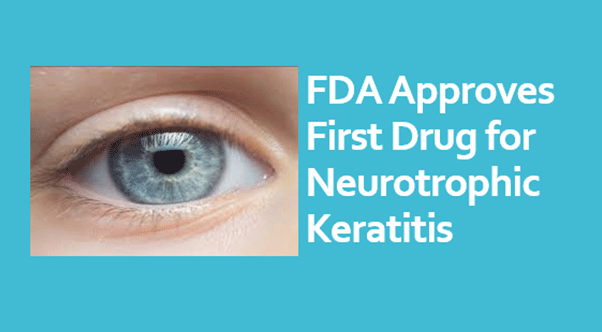FDA Approves First Drug for Neurotrophic Keratitis, a Rare Eye Disease
27, August 2018

The FDA’s approval of Oxervate, a drug used to treat Neurotrophic Keratitis, on Aug. 22, 2018 has come as a relief for many people with this condition. Neurotrophic Keratitis, a degenerative disorder of the eye, afflicts only one in 2000 people, but its consequences can be deadly for those who suffer from it:
- Lack of sensitivity in the cornea
- Sudden failure of the corneal epithelium, which is a protective layer for the cornea
- Slow or low healing of the cornea
- Ulceration, perforation or melting of the cornea
Lack of a thorough treatment regimen that is capable of completely healing the cornea, which this treatment provides, was one of the banes of this condition. The FDA is hailing this as a breakthrough treatment because the treatments for Neurotrophic Keratitis till now for this ailment consisted of largely palliative options that were symptomatic in nature and did not target the underlying causes. These included:
- Artificial tears
- Antibiotics
- Tarsorrhaphy, a procedure in which the eyelids are partially sutured together
- Eye drops derived from autologous serum
- Closure of the eyelid, or what is called botulinum-induced ptosis
- Conjunctival flap surgeries and corneal transplants. Though prevalent, these procedures are invasive by nature and can affect the appearance and function of the eye
The drug has been developed by the Italian company, Dompé farmaceutici SpA. This is the first ever application of a human growth factor as a drug or treatment and the first ever topical biologic medication to be approved in the field of ophthalmology. A drug that targets the root pathology of Neurotrophic Keratitis, cenegermin was authorized by the EMA in 2017.
Dosage
The molecule for this FDA-approved drug is cenegermin. The study, whose results were the basis for the approval by the FDA, was carried out on a sample of 151 patients over a period of eight weeks. The dosage after this study has been fixed at six drops a day, for eight weeks. This is the dosage during the trial, which had resulted in complete healing in 70 percent of the subjects.
Special case
The approval for cenegermin was given by the FDA under its Priority Review designation, which hastens the time for approval of a special case drug. This provision is exercised by the FDA when it determines that the drug can cause a significant improvement in the condition of the patients. This approval marks the first therapy from Dompé to be available in the US.
In addition, Oxervate also gets designated as an orphan drug, which are drugs for rare diseases, meaning they are not for common ailments. In the case of neurotrophic keratitis, fewer than 65,000 Americans have this condition. This designation paves the way for incentives to augment the development of such diseases.
How is Neurotrophic Keratitis caused?
The causes for Neurotrophic Keratitis are varied. These are some of them:
- Because of the nature and location of the cornea, they could get affected by conditions that affect the trigeminal nerve, as the cornea is derived from the ocular branch of this nerve
- Conditions such as viral infections such as herpes
- Systemic causes such as diabetes, leprosy or multiple sclerosis can also cause Neurotrophic Keratitis
- Physical causes such as accidents, burns, corneal surgeries or neurosurgery can be a contributor to the onset of Neurotrophic Keratitis